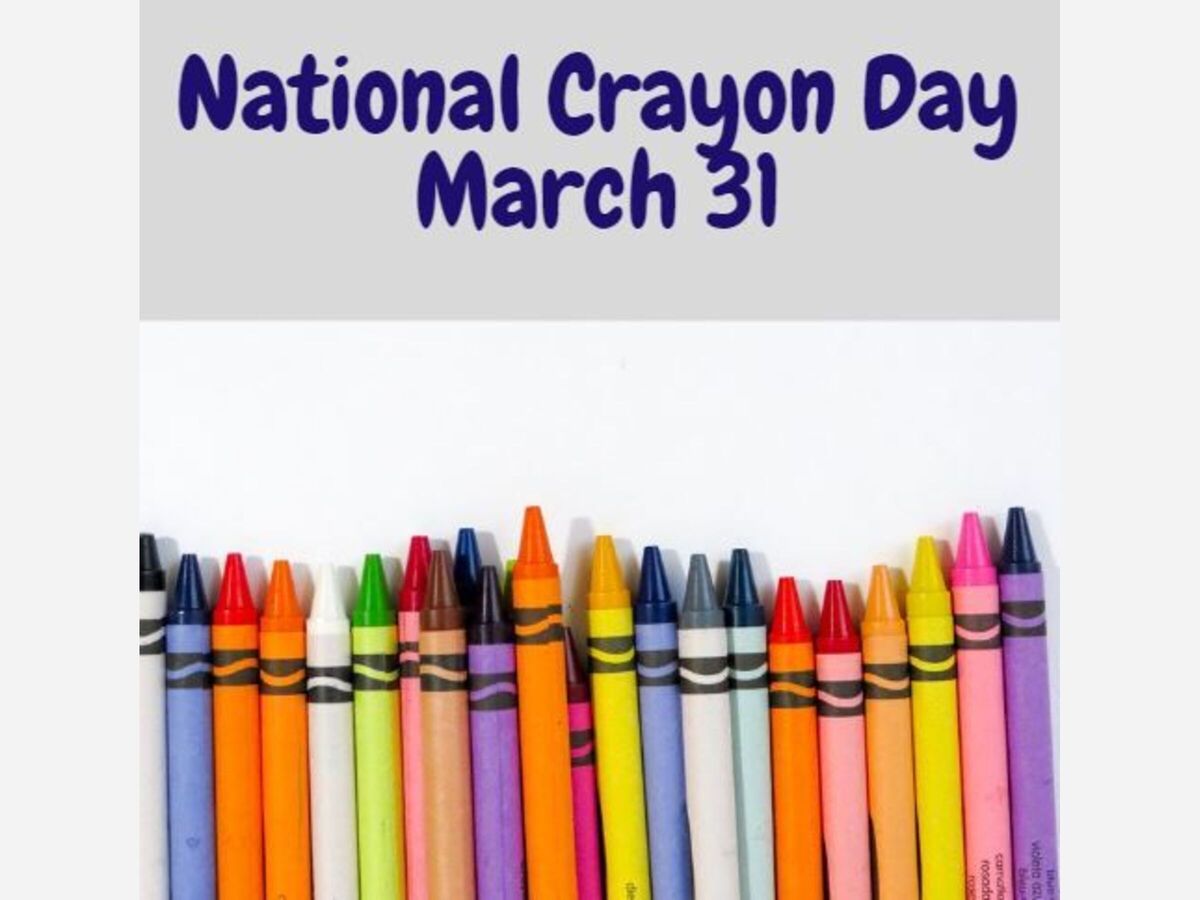Image


Fun Facts: Dateline Alamogordo New Mexico 3/31/2021 Celebrating National Crayon Day with color
March 31st is the unofficial national holiday, that is a celebration of color its National Crayon Day. This national celebration of color and art is a perfect day for art teachers across Alamogordo, New Mexico, California and the nation to bring a little color and flare to the classroom.
Here is an interesting fact as to why Crayons gain importance on this very day of March 31st. While this unofficial holiday is a great fun day to dust off your crayons and spend the day coloring, it can also be sort of a sad day for some people. That’s because Crayola has a tendency to retire old crayon colors on this day. From 1990 through March 2017, Crayola has retired over 50 different colors which include lemon yellow, blue gray, maize, violet blue, raw umber, orange-red, green blue and orange-yellow in 1990; magic mint, blizzard blue, teal blue and mulberry in 2003; and dandelion in 2017.
Coloring is not just for kids. As funny as it sounds the adult coloring craze took off in 2015. Prior to 2012 hardly anyone was even aware that adult coloring books existed. Though there have been adult coloring books in print for decades, they really didn’t experience massive growth until 2015.
The highest growth of the coloring books for adults was in early 2015. This is when the adult coloring books completely exploded in popularity. Many adult coloring books created by different artists and different publishers were side-by-side on the Amazon top seller lists for all book categories.
Something else that has fueled the coloring craze for adults is doctors are claiming there is an actual benefit to people’s well-being. Many people claim that coloring reduces their day-to-day stress, to an astounding degree.
In fact many therapists, including Carl Young have suggested coloring to their patients because of the therapeutic effects. Some even claim that coloring is more effective than yoga, meditation and even antidepressants. Though there are many other reasons why adults are using coloring books besides the amazing anti-stress benefits that they offer, it is a great benefit to have for anybody in the 21st century.
There is a wider trend than just the coloring book craze. There is a trend where adults are buying things that they had in childhood. For example there’s a new study that 55% of young adult books are bought by adults. This trend in buying things that bring back good memories has spread into the coloring book area and has essentially created a market for adult coloring books.
But back to National Crayon Day and the history of Crayons...
Currently, no one really knows when crayons were invented. All that is known is that the word comes from the mid-17th century and is a conglomerate of two Latin words: “crale” which means chalk and “creta” which means earth. The practice of combining various pigments with oil goes back thousands of years. And it was a method that was employed by a wide range of different cultures – from the Egyptians to the Greeks and Romans. However, these early crayons were not intended as a writing or drawing instrument for school children and therefore, it wasn’t used in the classroom in these civilizations. It was a tool used by adults – mainly by artists. The types of crayons produced back then probably wouldn’t have stood up to the rigor of being used by children anyway. In order for that to happen, a more modern type of crayon had to be invented.
Modern crayons have their roots in the Middle Ages and was often a tool used by artists. These cylinders were shaped like crayons but didn’t have the same composition of the modern crayon. They were mainly composed of charcoal and oil and were more like pastels. Over the years, crayons would evolve as a cross between a pastel and a modern crayon and would be popularly used during the 18th century. Eventually, the charcoal in these crayons would be replaced with various pigments. The biggest breakthrough in crayon technology came about when Joseph Lemercier produced a crayon in 1828 that replaced the oil normally found in crayons with wax instead. This produced a stronger crayon that could hold up to more vigorous drawing.
By the beginning of the 20th century, there were several companies producing wax crayons in the United States. In 1902, Crayola brand of crayons was invented by Edwin Binney and C. Harold Smith. The name was created by Mr. Binney’s wife, Alice Stead Binney, who combined the French word for Chalk (craie) with the ole from oleaginous (the paraffin wax used to make the crayons). Crayola offered 19 different boxes with 30 different colors when they first hit the market.
Between 1903 and 1998, Crayola had produced 120 different colors. From 1998 through today, 50 crayon colors have been retired. Today, some of the other brands on the market include Dixon Ticonderoga and Rose Art Crayons. There are also a number generic brands on the market today as well.
Fun facts reprinted with permission from HolidayCalenders.com
So if you are a kid, and adult or an artist like the local artist Rene Sepulveda known for "colorishis" designs and textures we all should celebrate the fun that crayons have brought to each of us beginning as children and for some of us, continuing into adulthood. Today, think back..
What was your favorite crayon color? Did you have a jumbo 64 box with a sharpener? Fat crayons or skinny? Enjoy your crayon memories.
Author Chris Edwards 3/31/2021